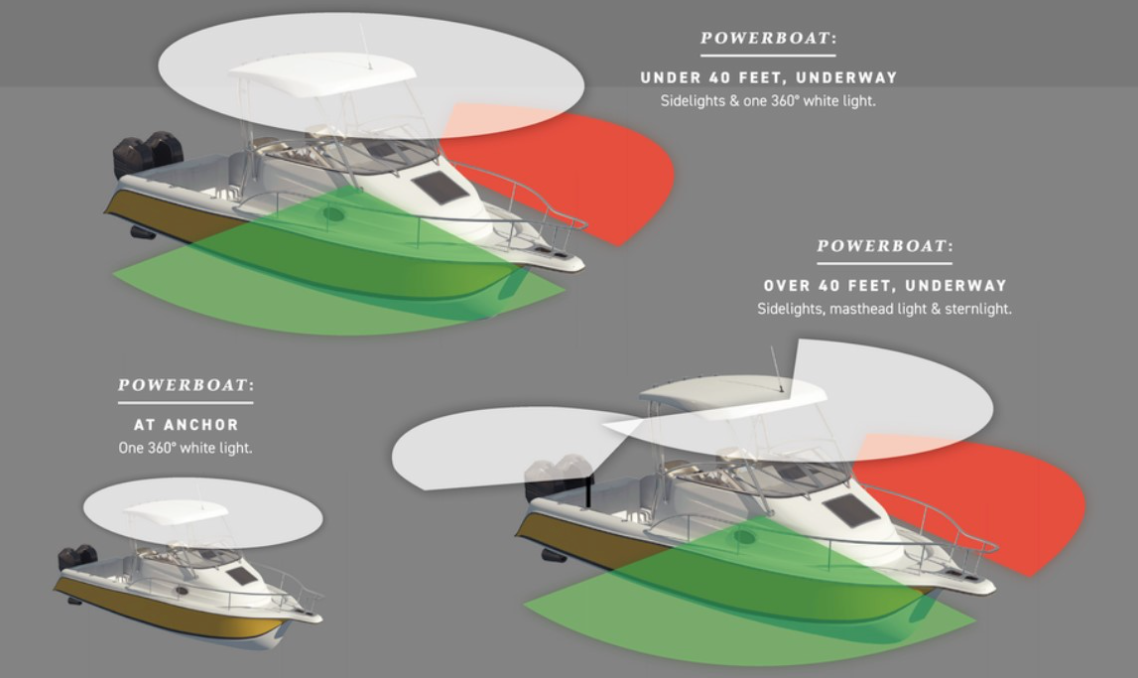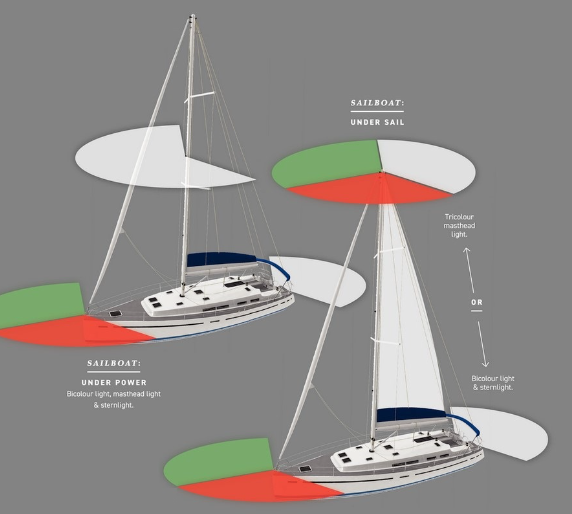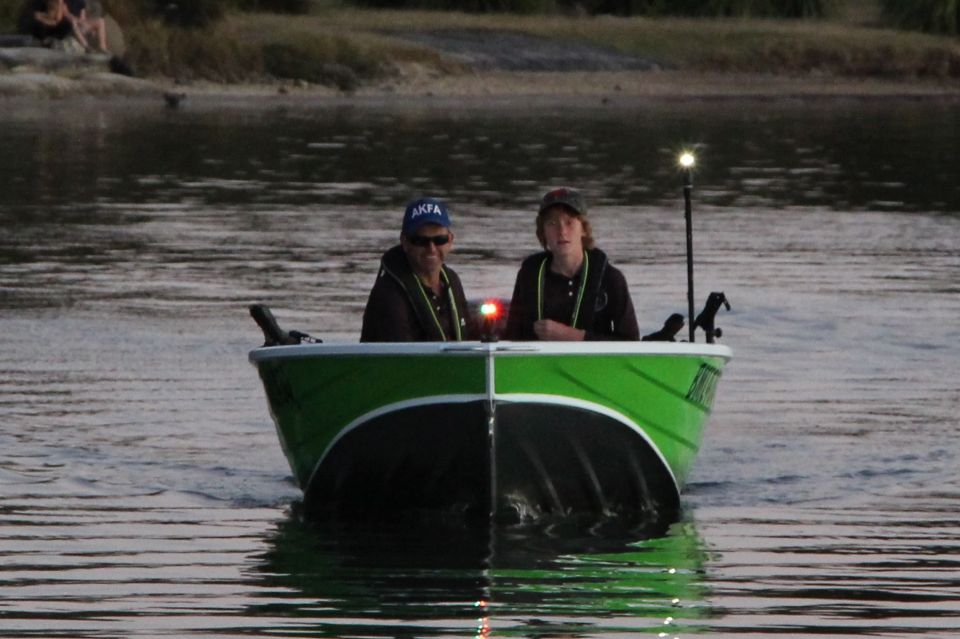Rules for Nav Lights
Warning
Be warned that navigation lights that come with your boat may not be accurately positioned. Some builders in the past seem to have mounted their lights more for aesthetic reasons than safety. Inspect the position of your navigation lights when buying a new (or new to you) boat.
Local cruising distances are often short, and with debris in the water, it is unusual to cruise in the dark, so it can be easy to neglect nav lights. But boating at night can be a wonderful experience and provides a special evening for family and friends. Checking the function of the boat’s nav lights on a regular basis is prudent for safe cruising after dark.
Navigation lights indicate who you are and where you are going. By determining the type, relative angle and activity of vessels, a captain of an oncoming vessel can act appropriately to avoid the danger of collision.
The rules for nav lights, which vary according to the size of the vessel, are clearly laid out in the U.S. Coast Guard’s Navigation Rules and Regulations Handbook, and in Transport Canada’s Safe Boating Guide.

In the U.S., on powerboats shorter than 39’3” (12 meters) long must have separate or combined red and green side lights covering 112.5 degrees and visible for one nautical mile. The white stern light must cover 135 degrees and be visible for 2 nautical miles or you can substitute one 360-degree all-around white light. For larger boats, the sidelights must be visible for two nautical miles and the masthead light for 3 nautical miles.
In Canada, Lights are required under Canada’s Collision Act to be used from dawn to dusk and in reduced visibility. Generally, recreational vessels from 23’ (7 m) to less than 65’8” (20 m) will have port and starboard sidelights, a stern light, a masthead (steaming) light and an anchor light.
Sidelights — Port and Starboard
Red port sidelights and green starboard sidelights must shine from dead ahead to 112.5-degrees aft on either side in an unbroken arc. Depending on the size of the vessel they may be separate lights or in one unit. Alignment is critical to portray the correct information.
Because they must be visible from ahead to abaft the beam they should be at the bow of a sailboat or outside the shrouds, otherwise they can be hidden by the sails. Powerboaters may have them on the cabin side or at the bow. Be careful of glare from bright objects on board that can affect night vision. A shiny bow pulpit with sidelights attached, for example, may have to be covered in black tape.

Stern light
A white stern light should show in a fixed arc over 135 degrees divided exactly in half on both sides of the boat. When installed correctly, the sidelights and stern light create a full circle of light.
Sailboats shorter than 65’ (19.81 m) can substitute a tricolor light (tri-light) at the top of the mast for separate sidelights and stern light. Preferably, this should only be used offshore. When close to land, the distance between the light and the hull, with possible land lights in between, is too confusing to provide distinctive information to other vessels to prevent a collision.
Masthead (Steaming) Light
The term masthead light can be confusing. Although called a masthead light by the U.S. and Canadian governments, it is more commonly known as a steaming light.
Masthead (steaming) lights are white and shine from 112.5 degrees on the port side through dead ahead to 112.5 degrees on the starboard side for a total of 225 degrees forward. They indicate that the vessel is under mechanical propulsion. Whereas the masthead (steaming) light on a powerboat is usually located at the top of a short mast, on a sailboat it is generally 2/3 of the way up the forward mast.
The masthead light must be located above the sidelights so using the masthead light with a tri-light is incorrect.

When motoring, a sailboat is considered a powerboat and must use a masthead (steaming) light even if the sails are up.
In addition to these lights, large power-driven vessels may need to carry a second white masthead light. If two masthead lights are used, then the aft one must be higher than the forward one to indicate the direction of travel.
Anchor Light
An all-round white light is required when anchored or tied to a mooring (but not to a dock), from dawn to dusk. The best location is at the top of the mast for 360-degree, unbroken visibility.
Small Boats
Vessels shorter than 23’ (7 m) with a maximum speed of less than seven knots are not required to carry navigation lights (sidelights and masthead) but many do for safety. If you choose not to, you must still show a white light, such as a handheld flashlight. This is also the rule for human-powered boats.
Because it is easy to get delayed ashore, it is prudent to always carry a light on board. If at anchor in an anchorage or fairway an all-around white light is required similar to larger vessels. An alternative option is to illuminate the deck with whatever light you have available.

Rules of the Road
To avoid a collision, it is necessary to recognize other vessels’ lights, whether underway or at anchor. By correctly gauging the intentions of nearby boats, you can act appropriately. Navigating can be challenging at night compared to daylight with recognition and distance more difficult to ascertain. Being comfortable with the maritime rules of the road leads to calm, good decisions in all conditions.
Liza Copeland is the author of four books on cruising.